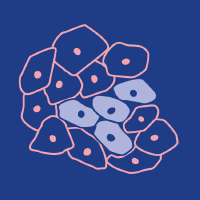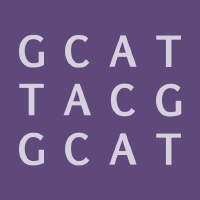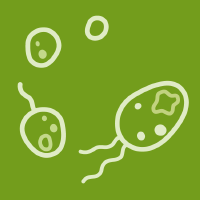Open Access Journals
-
IJMS
IMPACT
FACTOR
4.9 -
Applied Sciences
IMPACT
FACTOR
2.5 -
Sustainability
IMPACT
FACTOR
3.3 -
Sensors
IMPACT
FACTOR
3.4 -
JCM
IMPACT
FACTOR
3.0 -
Materials
IMPACT
FACTOR
3.1 -
Energies
IMPACT
FACTOR
3.0 -
Molecules
IMPACT
FACTOR
4.2 -
Electronics
IMPACT
FACTOR
2.6 -
Remote Sensing
IMPACT
FACTOR
4.2 -
Nutrients
IMPACT
FACTOR
4.8 -
Buildings
IMPACT
FACTOR
3.1 -
Foods
IMPACT
FACTOR
4.7 -
Mathematics
IMPACT
FACTOR
2.3 -
Polymers
IMPACT
FACTOR
4.7 -
Plants
IMPACT
FACTOR
4.0 -
Cancers
IMPACT
FACTOR
4.5 -
Water
IMPACT
FACTOR
3.0 -
Animals
IMPACT
FACTOR
2.7 -
Diagnostics
IMPACT
FACTOR
3.0 -
Agronomy
IMPACT
FACTOR
3.3 -
Biomedicines
IMPACT
FACTOR
3.9 -
Processes
IMPACT
FACTOR
2.8 -
Microorganisms
IMPACT
FACTOR
4.1 -
Land
IMPACT
FACTOR
3.2 -
Healthcare
IMPACT
FACTOR
2.4 -
Agriculture
IMPACT
FACTOR
3.3 -
Forests
IMPACT
FACTOR
2.4 -
JMSE
IMPACT
FACTOR
2.7 -
Viruses
IMPACT
FACTOR
3.8 -
Medicina
IMPACT
FACTOR
2.4 -
Cells
IMPACT
FACTOR
5.1 -
Nanomaterials
IMPACT
FACTOR
4.4 -
Pharmaceuticals
IMPACT
FACTOR
4.3 -
Symmetry
IMPACT
FACTOR
2.2 - IJERPH
-
Biomolecules
IMPACT
FACTOR
4.8 -
Genes
IMPACT
FACTOR
2.8 -
Coatings
IMPACT
FACTOR
2.9 -
Pharmaceutics
IMPACT
FACTOR
4.9 -
Antioxidants
IMPACT
FACTOR
6.0 -
Children
IMPACT
FACTOR
2.0 -
Life
IMPACT
FACTOR
3.2 -
Vaccines
IMPACT
FACTOR
5.2 -
Religions
IMPACT
FACTOR
0.7 -
Atmosphere
IMPACT
FACTOR
2.5 -
Micromachines
IMPACT
FACTOR
3.0 -
Education Sciences
IMPACT
FACTOR
2.5 -
Horticulturae
IMPACT
FACTOR
3.1 -
JPM
IMPACT
FACTOR
3.0 -
Brain Sciences
IMPACT
FACTOR
2.7 -
Bioengineering
IMPACT
FACTOR
3.8 -
Antibiotics
IMPACT
FACTOR
4.3 -
Metals
IMPACT
FACTOR
2.6 -
Minerals
IMPACT
FACTOR
2.2 -
Behavioral Sciences
IMPACT
FACTOR
2.5 -
Photonics
IMPACT
FACTOR
2.1
























 IJMS
IJMS
 Applied Sciences
Applied Sciences
 Sustainability
Sustainability
 Sensors
Sensors
 JCM
JCM
 Materials
Materials
 Energies
Energies
 Molecules
Molecules
 Electronics
Electronics
 Remote Sensing
Remote Sensing
 Nutrients
Nutrients
 Buildings
Buildings
 Foods
Foods
 Mathematics
Mathematics
 Polymers
Polymers
 Plants
Plants
 Cancers
Cancers
 Water
Water
 Animals
Animals
 Diagnostics
Diagnostics
 Agronomy
Agronomy
 Biomedicines
Biomedicines
 Processes
Processes
 Microorganisms
Microorganisms
 Land
Land
 Healthcare
Healthcare
 Agriculture
Agriculture
 Forests
Forests
 JMSE
JMSE
 Viruses
Viruses
 Medicina
Medicina
 Cells
Cells
 Nanomaterials
Nanomaterials
 Pharmaceuticals
Pharmaceuticals
 Symmetry
Symmetry
 IJERPH
IJERPH
 Biomolecules
Biomolecules
 Genes
Genes
 Coatings
Coatings
 Pharmaceutics
Pharmaceutics
 Antioxidants
Antioxidants
 Children
Children
 Life
Life
 Vaccines
Vaccines
 Religions
Religions
 Atmosphere
Atmosphere
 Micromachines
Micromachines
 Education Sciences
Education Sciences
 Horticulturae
Horticulturae
 JPM
JPM
 Brain Sciences
Brain Sciences
 Bioengineering
Bioengineering
 Antibiotics
Antibiotics
 Metals
Metals
 Minerals
Minerals
 Behavioral Sciences
Behavioral Sciences
 Photonics
Photonics


